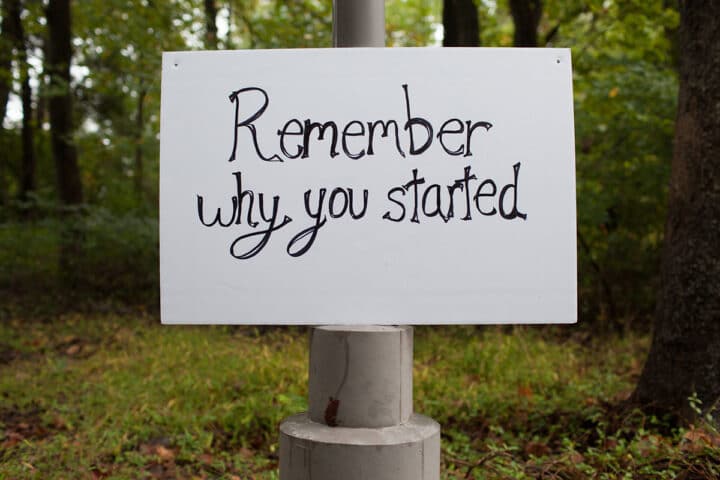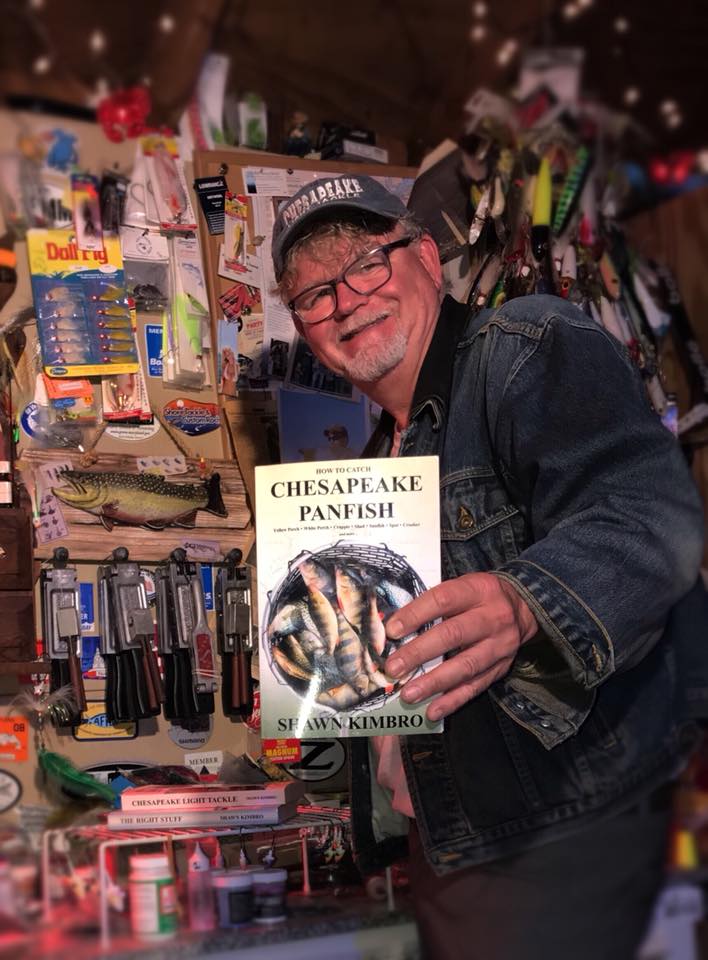“Remember Why You Started.” Those are the words on a hand-drawn poster near the top of the Chesapeake Watershed Forum’s website. “Sure, I remember why I started.” I thought as I packed our bags in advance of a planned weekend in West Virginia. Just for good measure, I threw my ultra-lite fishing rod and a tackle bag into the truck.
I started because I’m an avid angler, and since I spend a lot of time in the streams and rivers of the Chesapeake Watershed, I want them to be clean and free flowing. While I certainly don’t understand every scientific detail or recognize every hydrologic effect, my passion for fishing requires me to tune in to changing conditions in the waters where I fish. Sure, there are the obvious variations like the rise and fall of water levels and the migratory movements of fish, birds, and other wildlife, but I also get a unique perspective on the more gradual and alarming changes that come over time as a result of urban growth, shoreline development, rising sea levels, erosion, and evolving agricultural practices.
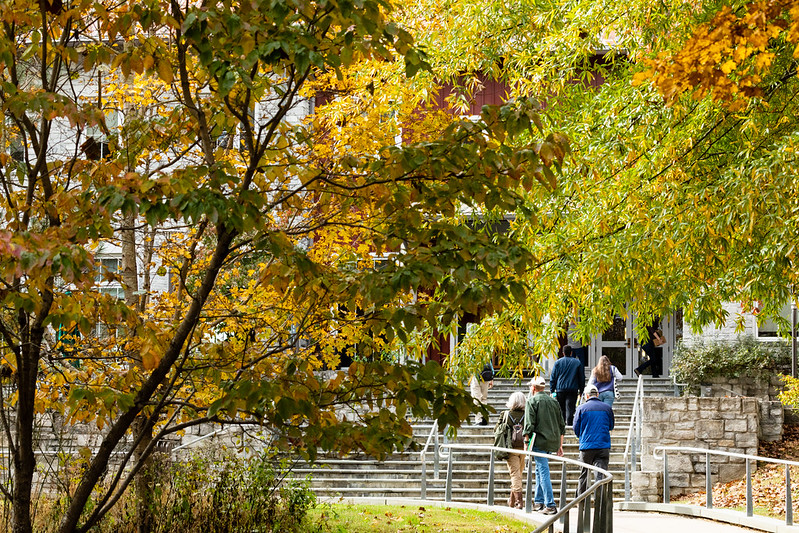
Photo by Will Parson/Chesapeake Bay Program
That’s what brought me to the Alliance for the Chesapeake Bay, and ultimately to the 2019 Watershed Forum. It didn’t hurt that it was a beautiful fall weekend and a perfect time to visit the National Conservation Training Center (NCTC) near Shepherdstown. The Center sits on over 500 acres of wildlife-rich countryside along a particularly scenic stretch of the Potomac River. It has lodges, outdoor patios, meandering walkways, auditoriums, classrooms, and a dining hall complete with a bar and social area.
That’s where I headed on the first night of the Forum. Dianne and I grabbed drinks and headed upstairs to meet other Board members and Alliance staff for dinner. The first thing I noticed is that, even though it was a Thursday evening and the Forum didn’t start until the following afternoon, there were hundreds of people here – including many young people – who seemed very excited about the upcoming weekend.
After dinner, the Board held a brainstorming session in the great room of the Aldo Leopold Lodge where most of us were staying. Before the session, I walked around the lodge looking at the many artifacts and vintage photographs on the walls. Leopold is a personal hero. I quote him extensively in the “Giving Back” chapter of my second book, The Right Stuff – Gear and Attitudes for Trophy Light Tackle Fishing and mention him again in my third book, How to Catch Chesapeake Panfish. His concepts for environmental stewardship are incredibly influential and even more compelling today than when he first introduced them nearly a century ago. This lodge named after him was a perfect setting for sharing new ideas!
As Board members and Alliance staff filtered into the lodge, we sat in a circle in front of the giant fireplace and traded thoughts about ongoing projects like “Businesses for the Bay” and “Project Clean Stream.” Everyone participated and I think we came away with some new perspectives on the programs. After the session, we settled in for socializing and most of us stayed up way too late in spite of our early obligations the next day.
The Board meeting the next morning went great. There was some sadness as we said goodbye to a few of our members whose terms were ending, but it was tempered by the knowledge that they wouldn’t be far away and their advice and expertise would always be readily available. There was also the excitement of voting in new Board members who will bring their much-needed skills and talents to the organization.
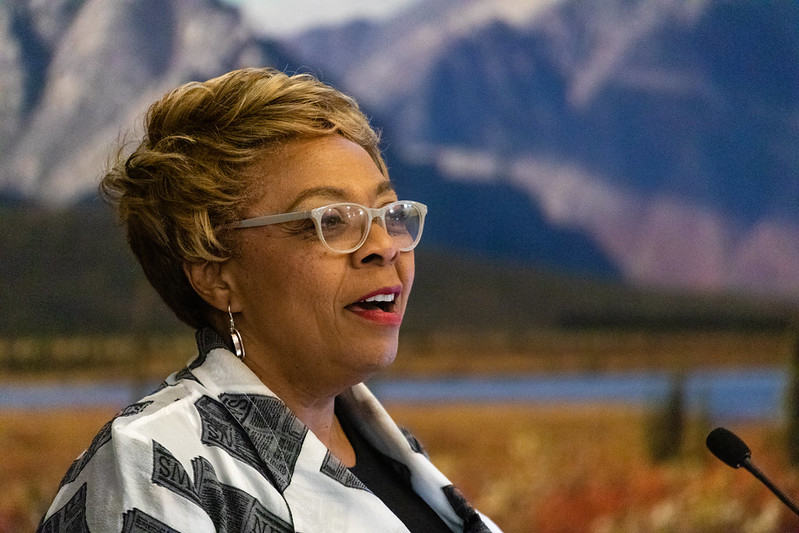
Dr. Mamie Parker delivering the keynote address. Photo by Will Parson/Chesapeake Bay Program.
After the meeting adjourned, I took a quick walk around the NCTC campus and watched as more people arrived for the Forum. All said, I believe there were nearly 500 people in the Byrd Auditorium for the opening ceremonies. The theme for this year’s Forum was “Better Together: Diverse and Innovative Collaborations for the Chesapeake Watershed.” The keynote address was delivered artfully by Dr. Mamie Parker. She’s the chair of the Board of Directors of the Virginia Game and Inland Fisheries Commission and the first African American woman to be appointed Assistant Director for the United States Fish and Wildlife Service (USFWS). She inspired us to be both inclusive and diverse in taking on the many challenges facing the Bay.
Saturday’s sessions included 90-minute seminars where participants were divided into smaller groups. With as many as nine sessions going on at the same time, it was tough to choose where to be! Everything sounded interesting and I couldn’t make up my mind which one to attend. I missed the early risers, who got to take the bird walk, the dairy farm tour, and the tree identification hike. Instead, I opted for a couple extra hours of sleep before digging into classes about increasing opportunities for outreach and improving collaboration between different conservation groups.
The after-lunch 90-minute sessions were great fun. Of the nine offered, I narrowed it down to two: a class about channeling the spirit of Pete Seeger for music and stewardship, and a seminar about improving the native habitats of brook trout. I peeked into the Seeger class, expecting to see a room full of old hippies and was pleasantly surprised to see the room overflowing with millennials. I sat in on the brook trout class where I learned about some very impressive restoration projects in the Virginia Blue Ridge. I closed out my day with a compelling class about how to tell a good story in words and photos.
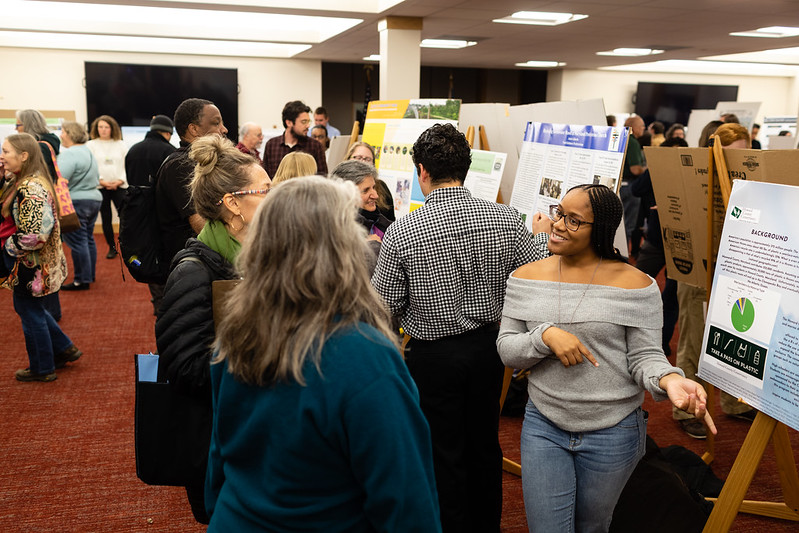
The 2019 poster session. Photo by Will Parson/Chesapeake Bay Program.
The highlight of the weekend was the after-dinner poster session on Saturday night. I’m glad we decided to stay an extra night to see the highlights of several dozen research projects and educational activities focused on improving the water, habitat, and quality of life in the Chesapeake Bay watershed. Dianne and I made a point to walk around and talk to the authors – high schoolers, undergraduates, and graduate students, researchers from non-profit organizations, and government scientists. My favorite projects included an experiment to set oyster spat on existing rip-rap in St. Leonard Creek, Maryland (it worked), and an effort to survey fish abundance and diversity around shorelines that were scalloped to reduce erosion (they increased). There was also interesting research into bird habitats, monarch butterfly migration, and brook trout stream enhancement, among other projects.
After the poster session, I walked out into the foyer where Alliance Executive Director Kate Fritz introduced me to Bobby Whitescarver. His new book, Swoope Almanac is a must-read for anyone interested in protecting the Chesapeake Bay ecosystem. Bobby described it as a book about about how he, a self-described soil and water conservation geek, fell in love with a ninth-generation cattle farmer (Jeanne). “She wants more grass, I want more buffers,” he says. It sounds like they reached a compromise and both the farm and the marriage are successful. It was a great conversation and I’m enjoying the book.
The next morning, we packed our bags and turned the truck back toward our home on Kent Island, but not before stopping to make a few casts along the river. While I fished, I reflected on the events of the weekend. A 12-inch smallmouth bass grabbed my lure and jumped high into the air above the Potomac. I reeled him in, then quickly released him back into the clear water. I thought about how I was coming away from the Watershed Forum with some new and incredibly useful knowledge, many new friends, and a significantly diversified network. I’m convinced that some of the brightest minds in the country are working toward improving our watershed. There’s something incredibly inspiring about spending a weekend with an alliance of people and organizations who share passions for preserving and protecting our lands and waters. It gives me hope that my grandchildren and their children can enjoy the Bay area as much as I have. More than anything, it motivates me and ultimately reminds me: that’s why I started!
This blog post is written by guest author, board member, Shawn Kimbro. Shawn is the author of three popular fishing books, Chesapeake Light Tackle, An Introduction to Light Tackle Fishing on the Chesapeake Bay; The Right Stuff, Gear and Attitudes for Trophy Light Tackle Fishing; and How to Catch Chesapeake Panfish.
Check out Shawn’s website here. Thank you, Shawn!
